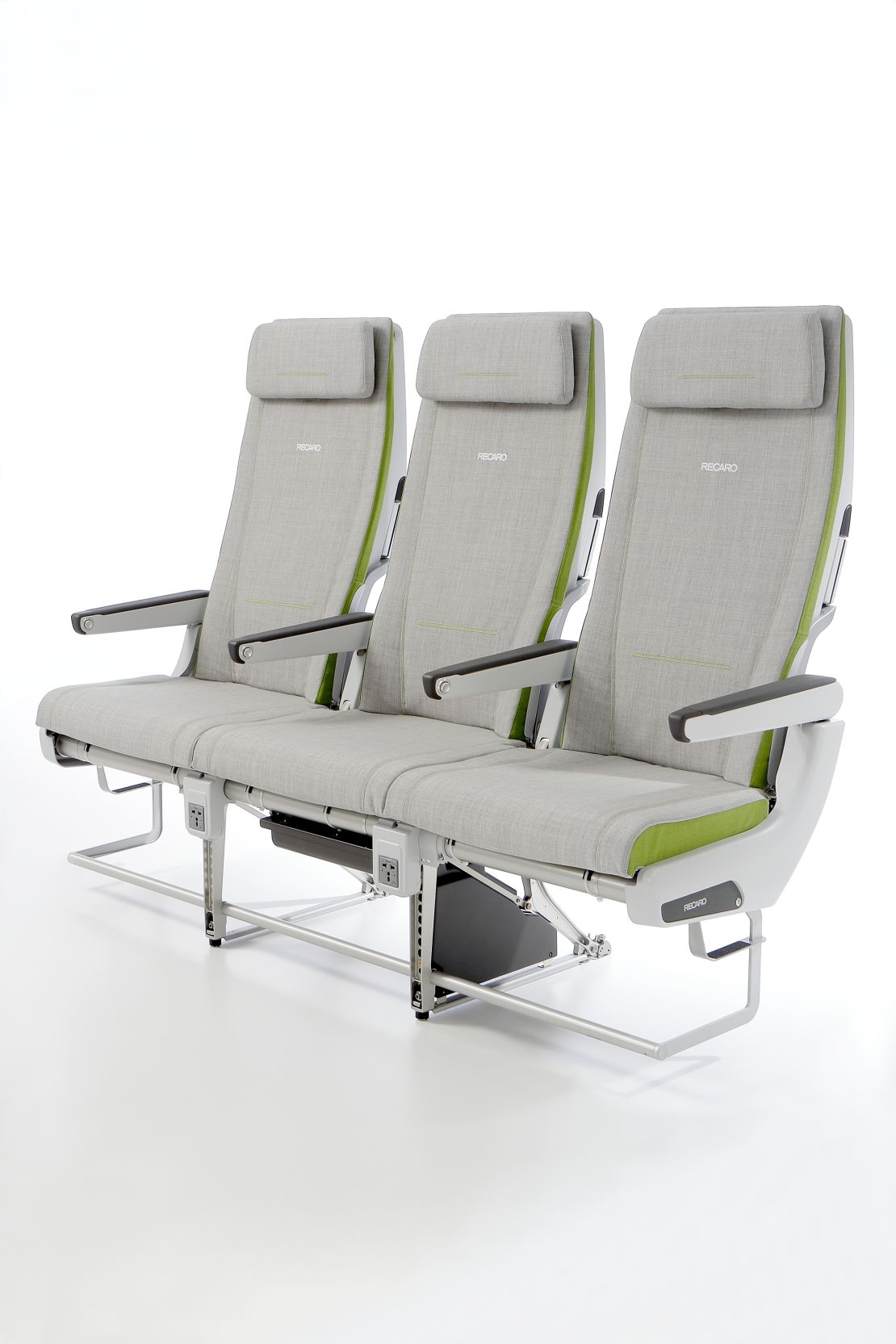Story highlights
Airline seats are shrinking from the once standard 18.5 inches to 17 inches across
Meanwhile, passengers are getting heavier, and flights are getting more crammed
Airbus is calling on the industry to make seats wider
You’re not imagining it: Airline seats are generally getting smaller.
But while many airlines have been slimming down their seats over the past few decades, we’ve been bulking up. According to the World Health Organization, the global prevalence of obesity has doubled since 1980.
“Seats are getting smaller and smaller as airlines look to squeeze revenue from their economy seats,” noted Ranga Natarajan, the senior product manager at SeatGuru, a website that rates the best and worst seats on nearly every plane in the industry.
In the 1960s, a seat width of 17 inches was standard, and for a period in the 1990s and early 2000s, that grew to 18.5 inches with the introduction of the Boeing 777 and Airbus A380.
Recently, however, airlines been filling planes to a capacity that Natarajan calls “historic proportions.”
“Airlines used to fly at 70% capacity. Now, that number is closer to 80 to 85%, which means every middle seat is occupied, so the elbow room just isn’t there,” he said.
500-pound man denied seat on plane
Airbus’ view: ‘Make ‘em wider!’
To fit in the extra seat, passengers are now facing a width that is 17 inches and in some cases as narrow as 16 inches, a state of affairs that has pushed airplane manufacturer Airbus to launch a new marketing campaign called “it’s the seat.”
In a call to action to make 18 inches the industry standard, Airbus partnered with the London Sleep Center. They tested a small sample of six adults and found that passenger sleep quality improved 53% in the larger seats.
“If the aviation industry doesn’t take a stand right now, then we risk jeopardizing passenger comfort into 2045 and beyond,” said Kevin Keniston, Airbus’ head of passenger comfort, in the company’s press materials.
People’s growing proportions aren’t the only issue, Airbus spokeswoman Ruth Nye said.
“In the early days of jet travel, people were flying less frequently and over shorter distances. Also, due to a lower load factor, many had empty seats next to them,” she said, adding that all of Airbus’ long-haul aircraft have been designed to accommodate 18-inch seats.
Ask the airlines

Ultimately, though, seat proportions are dictated by the airlines, not the plane manufacturers. Unsurprisingly, Airbus competitor Boeing is unimpressed with its rival’s call to arms.
“Airlines ask us for the flexibility to offer a great experience for passengers in a way that makes economic sense for the airline and economic sense for their passengers,” Boeing spokeswoman Kate Bergman said. “What they haven’t asked for is an arbitrary, self-serving seat-width standard.”
As for whether Airbus’ campaign will make any difference in years to come, it’s too early to tell, but many aren’t convinced.
“The current trend will continue: Airlines will try to make the optimal use of the space available in an aircraft due to the fact that the competition is very strong,” said Mark Hiller, chief executive officer of Recaro Aircraft Seating, adding that airlines haven’t changed their orders.
Making less feel like more
In the past couple of years, Recaro has been charged with the difficult task of making seats that are both more cramped and more comfortable. To achieve this effect, the company has slimmed down armrests to give more room for passengers’ hips and repositioned the literature pocket above the tray table to increase legroom.
Child-free zones on planes. Good or bad?
Mainly, though, Recaro has replaced traditional foam with a netting material that adheres more to the passenger’s body. The result is that seats are thinner, so even if pitch is reduced, it feels as if there’s more legroom.
What you can do
According to Natarajan, the best way to eke out some more space in the air is to do what the airlines are banking you’ll do: upgrade. Short of that, he notes, airlines treat different model numbers differently, and it’s worth looking up the model number and seat width on SeatGuru before you book.
“We’ve seen complaints that a number of airlines have started putting 10 seats across on the 777. One customer wrote that he flew one leg of a journey on a 777 in a 17-inch seat and flew back in an 18-inch on an A380. ‘It felt like an upgrade,’ he wrote.”




